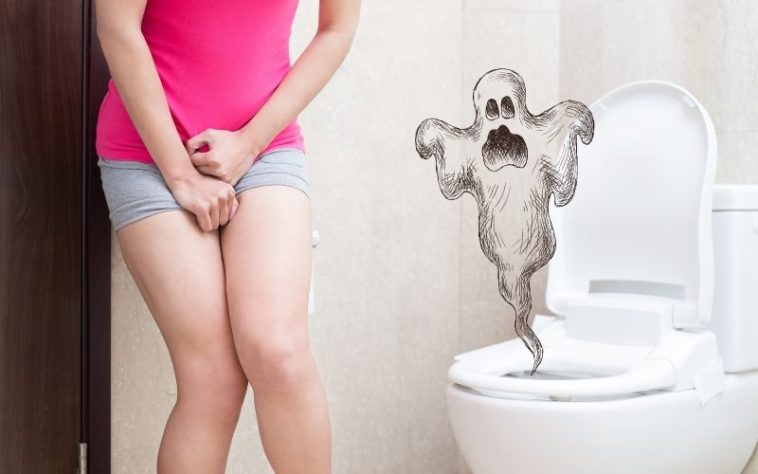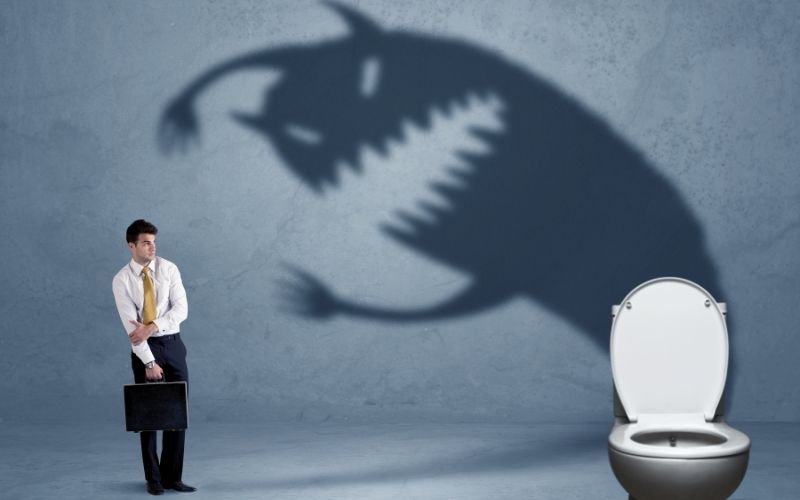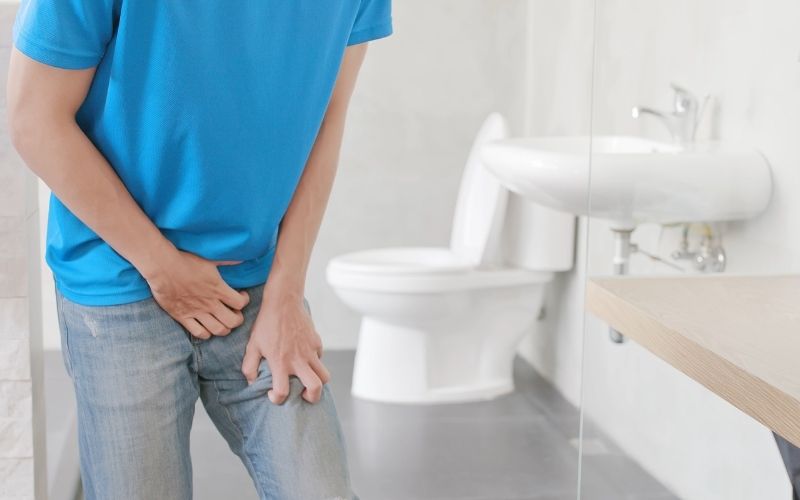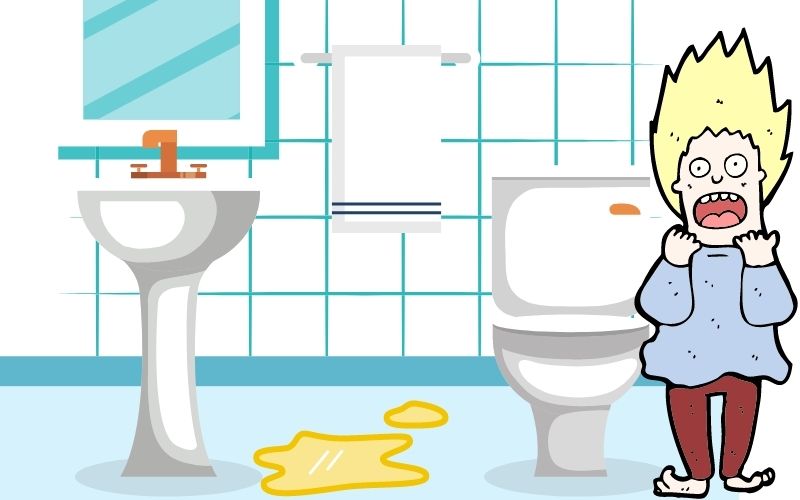Table of Contents
There are a lot of strange phobias that can shock you, and Urophobia is one of them. You have probably neither heard of it nor imagined such a phobia even exists. Urophobia is actually the fear of urine and urinating.
This must seem extremely strange because most people consider urinating as one of the most natural and fundamental functions of the human body. it is just as normal as eating and breathing.
But imagine there are some people who are afraid to take a leak so they avoid it as much as possible.
As you know, urinating is the process of getting rid of our body toxins. So the Urophobic keep the toxins in their body because they avoid urinating.
As a result, they really hurt their body and might even suffer from infections or kidney conditions.
Urophobia is a kind of phobia, and phobias are categorized as anxiety disorders. They may stem from childhood traumas, but they can be cured via medicine and psychotherapy.
Urophobia is not only the fear of real urine, but also even the thought of urine can make Urophobic people nervous. It is also important to know, that other people’s urine can also terrify them.
People suffering from Urophobia are mostly afraid of getting contaminated with germs. However, you should be careful to not to confuse urophobia with Mysophobia, which is the fear of germs.
These two phobias are highly connected and sometimes Urophobic people suffer from Mysophobia too. Not every Urophobic is a Mysophobic, though.
When Urophobic people are at work or away from home, they usually refuse to use public restrooms, due to their fear of germs. so they might also suffer from shy bladder syndrome; a kind of phobia in which people refuse to urinate in crowded places like public restrooms.
Even when Urophobic people decide to go to public restrooms, they spend too much time in there and use a lot of cleaning products, to make sure the restroom is as clean as they expect.
Because urine is yellow, people who suffer from urophobia might also undergo Xanthophobia, which is the fear of the color yellow.
Severe Urophobic people try to avoid urinating at all, while people with mild symptoms try to drink fewer liquids to decrease their urge to urinate.
Urophobia consists of dysfunctional thoughts and behaviors and can stop people from having a happy and fulfilling life. Because it will deteriorate different aspects of the patients’ life. Namely, school, work, and relationships.
Therefore, it is of paramount importance to learn more about this condition and the way it can be cured.
We recommend you watch this video as well:
Read More: Why do I feel I’m going to die soon?
What are Urophobia symptoms?
As mentioned above, Urophobia is a kind of anxiety disorder. The most significant symptom in all anxiety disorders is anxiety while being exposed to the fear stimulus.
Fear stimulus is anything that can trigger anxiety. In this case, the fear stimulus is urine itself, or the thought of it.
The second most significant symptom in anxiety disorders is avoidance from the fear stimulus. Hence, Urophobic people will avoid urine anywhere, any time.
Avoidance can lead to a cycle of maintaining the condition.
Because as patients avoid the fear stimulus, they experience a false sense of security which can increase the fear and anxiety they undergo. so, avoiding urination can just make the symptoms more severe.
Panic attacks can be seen in severe forms of urophobia, and if they occur the patient would need to be hospitalized. However, this is not the case for everyone suffering from Urophobia.
In addition to the mentioned symptoms, DSM-5, which is the diagnostic and statistical manual of mental disorders, suggests some symptoms by which urophobia can be diagnosed.
These symptoms should last for at least 6 months, and 3-5 of the following symptoms must be seen in the patient.
These symptoms include:
- High levels of anxiety when they see urine
- High levels of anxiety while urinating or thinking about it
- Not being able to manage anxiety
- Panic attacks when exposed to the fear stimulus
- Avoidance from urine or urinating
- Muscle tension
- Sense of depression
- High heartbeat rate
- Rapid breathing
- A sense of dizziness and/or passing out
- Sweating
- An urge to vomit
- Shaking movements in parts of the body
- Migraine
- The feeling of intense warmth or coldness
- Dry mouth
What causes Urophobia?
There is no definite and known cause of anxiety disorders. However, nurture and nature both play a vital role in developing the condition.
Genetics is an important factor that can cause urophobia. if someone is born with a family history of mental illnesses, they will develop a genetic predisposition.
So, if they are exposed to an environmental stressor that triggers their anxiety, they might start to suffer from Urophobia symptoms.
Genetics can also cause a malfunction in the brain’s neurotransmitters level.
People diagnosed with Urophobia have higher levels of serotonin and lower levels of dopamine. So it can be said that urophobia can be inherited from parents and people with a family background of anxiety disorders are at risk for this mental illness.
Environmental factors can also cause Urophobia. If a child experiences a traumatic event related to urine, they might develop Urophobic symptoms as an adult. For example, in children who undergo urinary tract infection, the uncomfortable feeling connected to urination increases the risks of Urophobia in them.
So both environmental and genetic factors can lead to Urophobia.
Read More: 7 Traits of A Professional Personal Development Mentor
What is the treatment for Urophobia?
As we said above, Urophobia is caused by both environmental and genetic factors.
So both psychotherapy and medication can be used as treatment. However, like any other anxiety disorder, there is no definite treatment for urophobia. Here are some ways that we can use for Urophobia treatment.
Exposure therapy
In exposure therapy, patients are exposed to their fear stimulus over a specific period of time. In this case, urine. At first, the patients are exposed to the least triggering stressors, for example, the picture of urine.
If they could pass this phase without anxiety attacks, the next step will start. In the second phase, the patients are asked to imagine and visualize situations related to urine and urinating. This will help them experience some feelings similar to the real situation.
And lastly, they will be exposed to real urine, but they will be able to control their anxiety because they have been confronted with smaller triggers before. During this technique, the therapist will teach the patient to do muscle relaxation or breathing techniques in order to control their anxiety.
However, this method is somehow unethical, because it can highly shock the patients. So these days, this method is not recommended.
CBT (Cognitive Behavioral Therapy)
CBT is used as one of the main treatments for all mental disorders, especially anxiety disorders. this treatment focuses on irrational and dysfunctional thoughts and helps the patient to replace them with functional ones.
If a Urophobic person tries CBT, he/she will be taught why he has the condition and what has caused their anxiety. This enlightenment can help them shed a light on their life, and find out about the underlying reasons for their behavior.
Furthermore, a CBT therapist will help the client replace the dysfunctional thought with some alternative functional thoughts. This is done through the ABCD technique.
A
A or Attendance, is an event that triggers anxiety.
B
B or Belief, is the thought that comes to one’s mind after they have been triggered.
C
C or Consequence, is the feeling and thought that appears as a result of the trigger.
D
D or Dispute, is the rational and functional thought, provided by the therapist, to dispute and replace the irrational thought.
Patients are asked to write down their ABCD to be able to replace their irrational thoughts with rational ones.
Mindfulness-Based Stress Reduction (MBSR)
This is a kind of group therapy in which patients are taught some meditation techniques.
For example, they are told to focus on their breathing rhythm, inhale and exhale. This way, they would be distracted from the stressing trigger.
This kind of therapy usually lasts for 8 weeks. To boost the patients’ treatment, sometimes they are given some homework.
Like yoga and meditation practices, then they have to record the thoughts and feelings they experienced during the meditation.
Dialectical Behavioral Therapy (DBT)
DBT is also a kind of group therapy that a number of people participate in. this can last for almost 6 months.
DBT is usually used to treat personality disorders. Although, it also can be used to cure phobias.
DBT has 3 modules, including:
Half smiling
In this module, the patients are asked to think about the thought that makes them nervous. Then the patients are asked to lift the corner of their lips just as in smiling. This will help the patients to constrain themselves from the stressful thought by half smiling.
Mindfulness
In this module, the patients are asked to be focused on here and now. For example, by focusing on their breathing and its sound. This technique will disconnect their mind from negative thought and connects them to the present moment.
Distress tolerance
In this module, patients are taught to face the reality and plan for problem-solving, instead of becoming emotionally overwhelmed while being exposed to a stressor. This will help the patients make wise and rational decisions instead of taking impulsive actions.
Eye Movement Desensitization and Reprocessing (EMDR)
This approach is used for patients suffering from various anxiety disorders, including phobias. This method is used only for people who are aware of the reason for their phobia.
In this kind of therapy, first, the psychologist should gather some information about the patient’s disorder. Then the reason for the disorder will be discussed.
After that, the recent triggers and stressors will be evaluated. Next, the patients will be told to visualize their stress recourse, lastly, the psychologist will help the patients to overcome the stressful thought by helping them with creating some positive images about the trigger.
Yoga and Meditation
Yoga and meditation techniques can be really relaxing and useful for minimizing many different kinds of mental disorder symptoms.
People who undergo phobias are completely focused on their stressors and triggers. Meditation techniques and yoga postures will help people to be fully present at the moment and not to be distracted by negative thoughts.
There are different kinds of meditation techniques and yoga postures, and almost all of them can be helpful.
Medication
Drugs have a quicker effect on the symptoms and will reduce them almost after 2 weeks. But they should be prescribed only by doctors.
If the cause of the phobia is related to genetics, the medication will be more effective. In addition, drugs will be more helpful in decreasing the physical symptoms.
In general, two types of drugs are used to cure Urophobia:
Antidepressant drugs
these drugs do not only cure depression, but also phobia. They are useful for making the patient calm down. They should be used every day and based on a doctor’s prescription.
Antianxiety drugs
These kinds of drugs are used to reduce anxiety and are mostly prescribed for patients who undergo panic attacks along with phobia.
Something that you should bear in mind is that no matter whether the cause of the phobia is environmental or genetic, the combination of psychotherapy and medication always works the best.
What other disorders have comorbidity with Urophobia?
People suffering from Urophobia are also sometimes diagnosed with OCD (Obsessive Compulsive Disorder), Xanthophobia, panic attack, and shy ladder syndrome.
Shy ladder syndrome or paruresis is a kind of social anxiety in which the person cannot urinate in the real or imaginary presence of others, like in public restrooms.
Urophobic people also undergo some physical conditions like kidney stones, kidney ruptures, infections, or bedwetting.
This podcast explains how to manage your phobia :
Frequently Asked Questions
Q1) What causes urophobia?
Genetics and the environment are both responsible for urophobia.
Q2) How to cure paruresis?
It can be cured via different sorts of psychotherapy and medications,
Q3) What is urine phobia?
It is a condition in which the person is afraid of urine or urinating.
Q4) Is being pee shy a real thing?
Yes, it is real. And a person who is pee shy is afraid of urinating in public restrooms.
Q5) Is paruresis a disability?
Under the Americans with Disabilities, Act Amendments Act of 2008 (“ADAAA”) paruresis is considered a disability.










